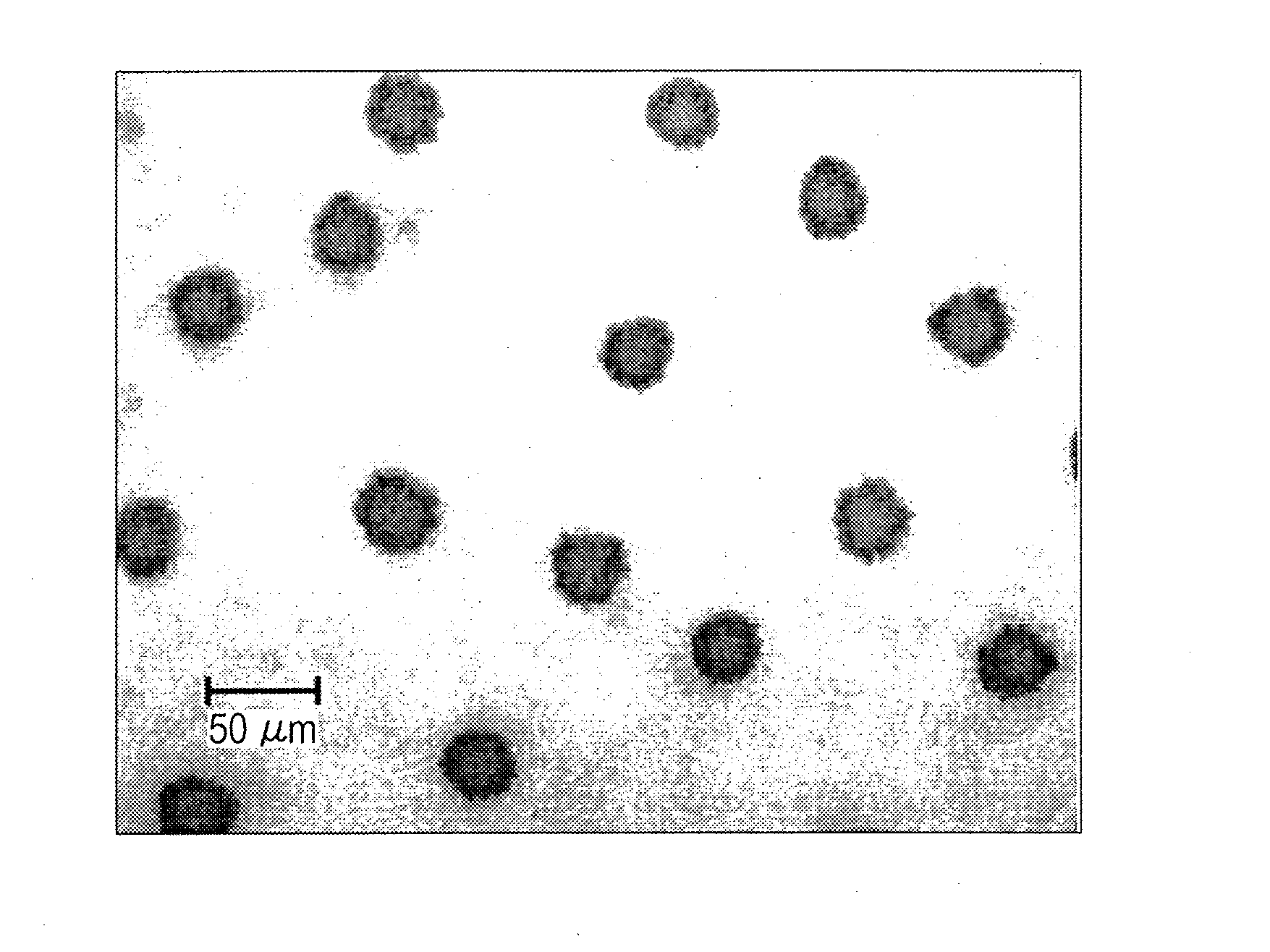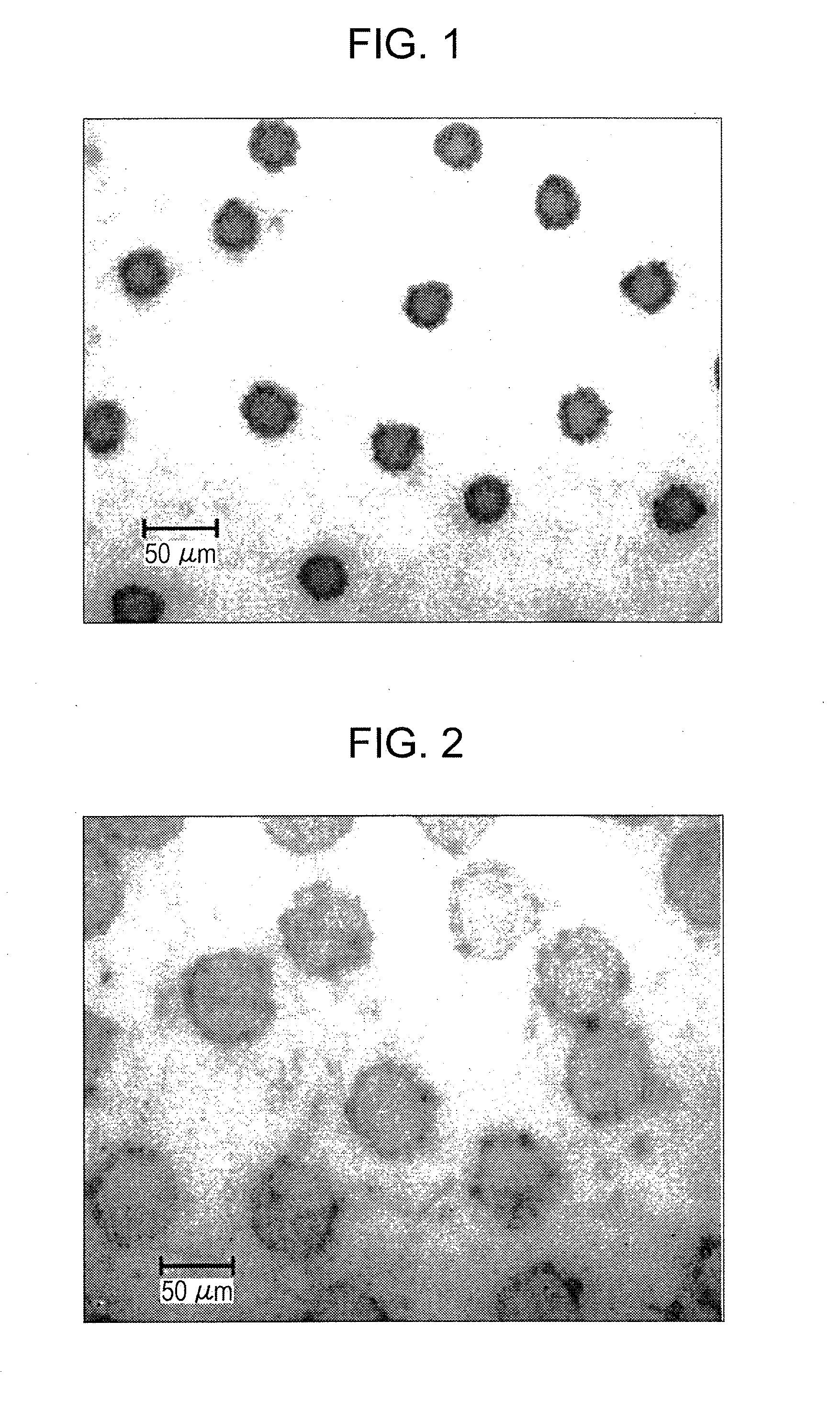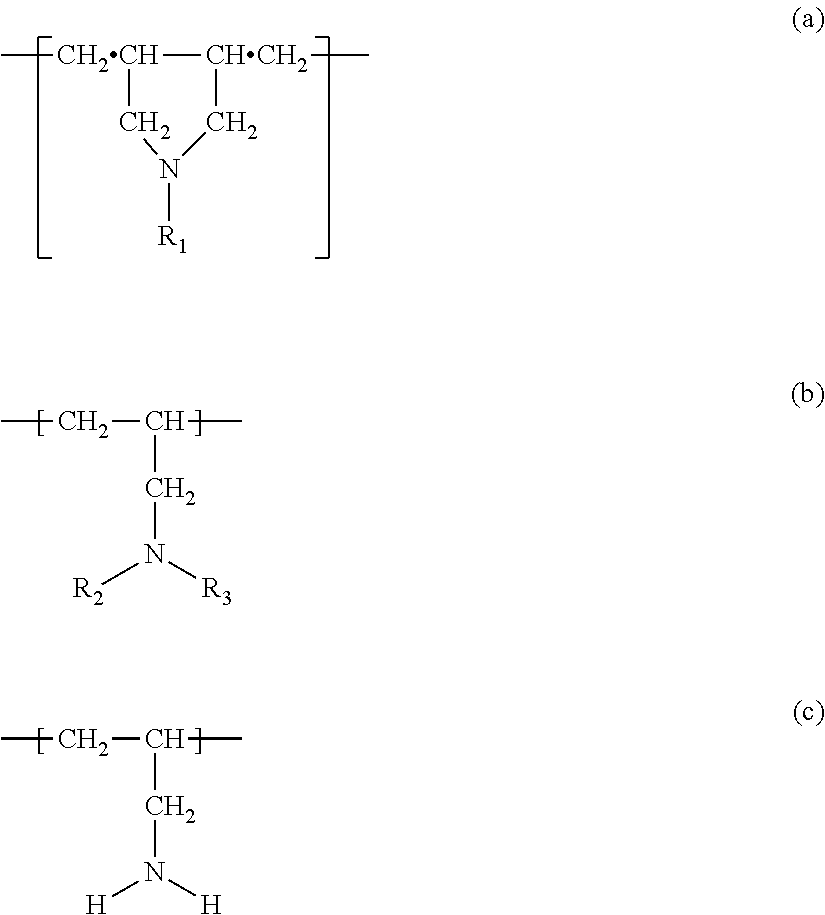Clear ink composition
a technology of clear ink and composition, applied in the direction of inks, printing, pharmaceutical delivery mechanisms, etc., can solve the problems of increased manufacturing costs, bleeding or aggregation spots in images, and poor aqueous-ink absorbency ability, etc., to achieve high water solubility and water-holding capacity, brown discoloration, and significant low moisture absorption
- Summary
- Abstract
- Description
- Claims
- Application Information
AI Technical Summary
Benefits of technology
Problems solved by technology
Method used
Image
Examples
production example 1
Production of Modified PAA-1
Copolymer of DAMA and AA (5 / 5)
[0184]A 2000-mL four-neck separable flask equipped with a stirrer, a Dimroth reflux device, and a thermometer was charged with 159.10 g of a 58.80% aqueous solution of monoallylamine hydrochloride, 212.20 g of a 69.58% aqueous solution of N,N-diallylmethylamine hydrochloride, and 834.70 g of distilled water. The aqueous solution of the monomers was warmed to 65° C., and 54.24 g of 2,2′-azobis(2-amidinopropane)dihydrochloride was added thereto as a radical initiator, and polymerization was allowed to proceed for 48 hours.
[0185]After completion of the polymerization, 193.30 g of a 50% aqueous solution of sodium hydroxide was dropwise added thereto under ice-cooling to neutralize hydrochloric acid. After completion of the neutralization, unreacted monomers were evaporated at 50° C. under reduced pressure (10.6 kPa).
[0186]The thus-obtained solution was subjected to electrodialysis for desalting to obtain 1055.43 g of a 14.35% aqu...
production example 2a
Production of Modified PAA-2a
Copolymer of DAMA and Carbamoylated AA (5 / 5)
[0188]A 1000-mL four-neck separable flask equipped with a stirrer, a Dimroth reflux device, and a thermometer was charged with 586.35 g of a 14.35% aqueous solution of the free-type copolymer of N,N-diallylmethylamine and allylamine obtained in Production Example 1, and 104.17 g of 35% hydrochloric acid was dropwise added thereto under ice-cooling, followed by warming to 50° C. Then, 455.07 g of a 7.5% aqueous solution of sodium cyanate was dropwise added thereto, and a reaction was allowed to proceed for 24 hours.
[0189]After completion of the reaction, 42.00 g of 50% sodium hydroxide was dropwise added thereto under ice-cooling to neutralize unreacted hydrochloric acid.
[0190]The thus-obtained solution was subjected to electrodialysis for desalting to obtain 907.00 g (yield: 97%) of a 11.30% aqueous solution of free-type copolymer of N,N-diallylmethylamine and carbamoylated allylamine (copolymerization ratio of...
production example 2b
Production of Modified PAA-2b
Copolymer of DAMA and Carbamoylated AA (3 / 7)
[0194]As in Production Example 1, 889.95 g of a 14.50% aqueous solution of free-type copolymer of N,N-diallylmethylamine and allylamine (copolymerization ratio of 3:7) was prepared by using 127.32 g of a 69.58% aqueous solution of N,N-diallylmethylamine hydrochloride, 222.75 g of 58.80% monoallylamine, and 747.78 g of distilled water.
[0195]As in Production Example 2a, 853.10 g (yield: 95%) of a 11.52% aqueous solution of free-type copolymer of N,N-diallylmethylamine and carbamoylated allylamine (copolymerization ratio of 3:7) was prepared by using 505.67 g of the aqueous solution of the copolymer above, 637.10 g of an aqueous solution of sodium cyanate, and 25.20 g of an aqueous solution of sodium hydroxide. The weight-average molecular weight of this copolymer was 1500.
PUM
| Property | Measurement | Unit |
|---|---|---|
| temperature | aaaaa | aaaaa |
| RH | aaaaa | aaaaa |
| RH | aaaaa | aaaaa |
Abstract
Description
Claims
Application Information
 Login to View More
Login to View More - R&D
- Intellectual Property
- Life Sciences
- Materials
- Tech Scout
- Unparalleled Data Quality
- Higher Quality Content
- 60% Fewer Hallucinations
Browse by: Latest US Patents, China's latest patents, Technical Efficacy Thesaurus, Application Domain, Technology Topic, Popular Technical Reports.
© 2025 PatSnap. All rights reserved.Legal|Privacy policy|Modern Slavery Act Transparency Statement|Sitemap|About US| Contact US: help@patsnap.com



